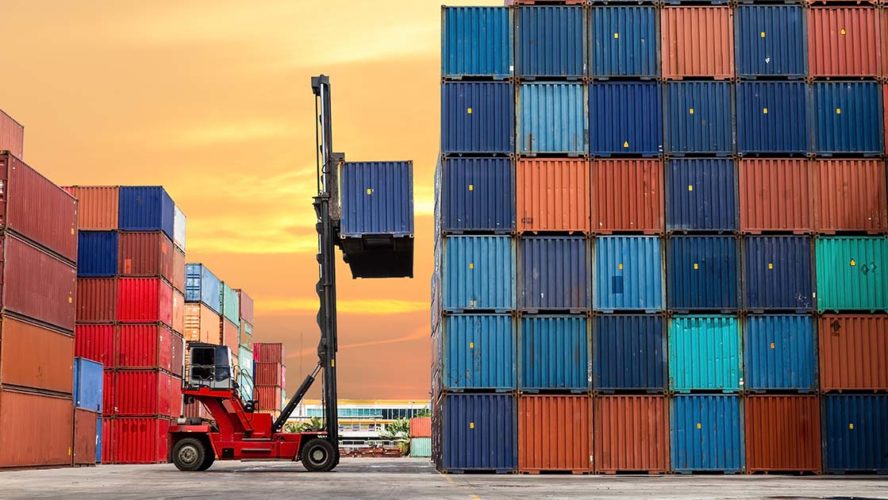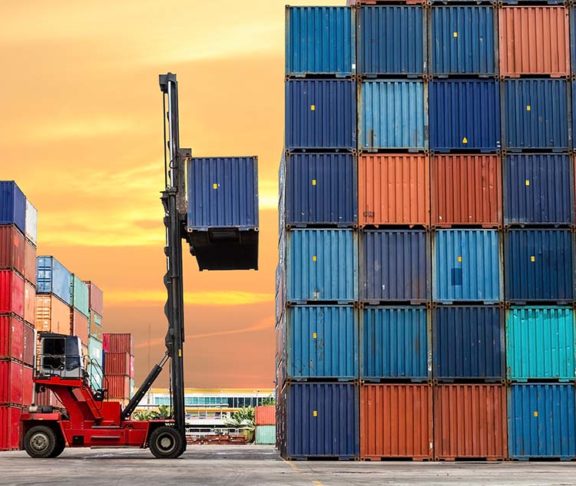
Rocco Rossi
President and CEO, Ontario Chamber of Commerce

Ester Gerassime
Economic Analyst, Ontario Chamber of Commerce
Businesses across Canada are increasingly looking to reassess and bolster their supply chain strategies by moving from “just-in-time” to “just-in-case” delivery models.
The ongoing crunch of bottlenecks and delays throughout the global supply chain network continues to bear down heavily on every sector. The private sector is prepared to do its part, but the government needs to eliminate barriers, reduce red tape, and streamline the process for industry. We need action now to reduce future risks, as policy solutions will take time to materialize.
But something’s got to give. To say Canada’s supply chain infrastructure and network are outdated would be an understatement. Many ports and businesses still operate as they did in the 1980s — on paper, by email, and without the technologies to help ensure the visibility of deliveries. On top of that, much of our infrastructure remains in a state of disrepair and is long overdue for investments in climate resiliency and adaptability. Without immediate efforts to modernize infrastructure and streamline operations, the stability and reliability of the entire supply chain system will remain vulnerable to labour shortages, climate change, and other risks.
Although many weaknesses in Canada’s supply chain pre-date the pandemic, they have certainly been amplified by it, further exacerbated by the war in Ukraine, the China–U.S. trade war, and extreme climate events. The private sector is addressing many supply chain issues. However, progress is often overshadowed by the immediate and urgent action still needed by the government on workforce development strategies and on bringing our businesses, infrastructure, modes of transportation, and distribution channels into the 21st century. The pandemic caused the chain to bend, but it’s incumbent upon us all to ensure it doesn’t break.
Workforce development strategies are required to promote the transportation and supply chain industries as viable career paths through education campaigns, training incentives, and immigration pathways and agreements. Currently, long-standing labour shortages in the trucking industry impose significant strains on supply chain operations. According to the Canadian Trucking Alliance, there are currently over 23,000 truck driver job vacancies, which is expected to increase to 55,000 by 2024. Similar labour challenges are also being felt in logistics and warehousing, industries that are essential for ensuring the safe and efficient movement and storage of goods. Shortages like these contribute to inefficiencies across the supply chain network and ultimately impact consumers through rising prices and businesses through lack of inventory while threatening the delivery of critical goods to Canadians.
Attracting talent from outside of Canada will be important for filling these gaps. In Ontario alone, job vacancies hit a record 359,000 during the first quarter of this year. According to the Ontario Chamber of Commerce’s flagship publication, the 2022 Ontario Economic Report, 62 per cent of sectors have been facing labour shortages since the beginning of this year. The longer those shortages last, the more significant the impacts are on supply chains and economic productivity. To address this issue, the federal government must prioritize increasing the total allocation of economic immigrants that can be accepted by the province each year. With a population size of approximately 15 million, Ontario’s current allocation of 9,700 economic immigrants is a small allowance to draw from when working to alleviate labour market challenges induced by a shortage of skilled workers.
Additional supply chain efficiencies can be achieved by modernizing and investing in our infrastructure. This means working with the private sector to invest in “smart solutions” and digitizing infrastructure, air, freight, sea cargo, and other supply chain components that better facilitate the adoption of Industry 4.0 technologies and automation.
The interconnected nature of supply chains across countries and their freight lines results in a compounding effect as disruptions, delays, and bottlenecks multiply. Unfortunately, no single policy can address this entirely. The key, however, is to act now to bolster them for the future. Provincial and federal governments have a responsibility to investigate pain points along supply chains and make the necessary investments to ensure their reliability over the long term. The private sector is already doing its part; now, we need the government to step up to the plate and make this a priority.



